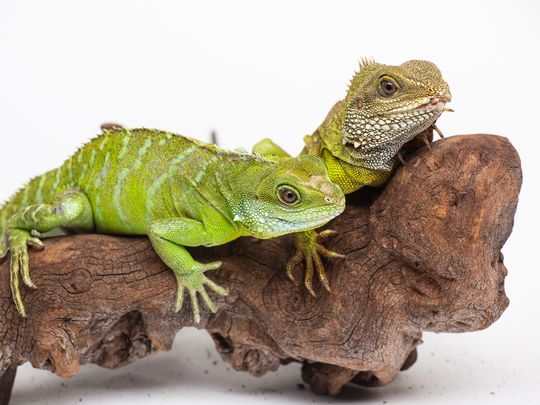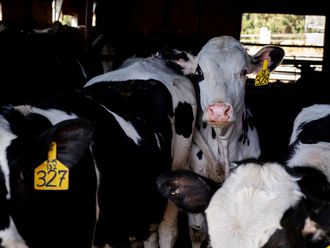
There is a two-foot-long, emerald green Asian water dragon at the Smithsonian's National Zoo. And this dragon, named Saphira after the character in the popular Eragon book series, has done something that scientists have not documented in any other water dragon.
In 2016, Saphira laid an egg that hatched into a baby lizard, despite the fact that she lives by herself.
You see, most vertebrates, or animals with a backbone, need a male and a female to produce a baby. "It takes two to tango," as the saying goes. But a very small portion of female vertebrates are able to produce an offspring all on their own. Scientists call this parthenogenesis (pronounced par-thuh-noh-JEN-uh-sis).
"Parthenogenesis is found in less than 0.1 percent of all vertebrates," said Kyle Miller, Saphira's keeper at the Reptile Discovery Center.
What's really wild is that Miller and his team might have never discovered Saphira's miraculous ability if they hadn't started saving her eggs.
"About five years ago, just for fun, we started incubating eggs from any females that laid, whether they were bred or not," Miller said.
Miller had heard about how some reptiles could reproduce without breeding, so he and his staff started collecting eggs from some of the tortoises, turtles, snakes and lizards in their care. Most of them were duds.
But one day while he was shining a bright light behind some of the eggs - a technique called "candling" - Miller noticed tiny, thin, red lines.
What he saw were veins.
Only two of the eggs Saphira produced through parthenogenesis were able to develop enough to hatch. And just one of those is alive today. But that animal - another female, which doesn't yet have a name - is thriving.
"She's a full-grown adult now," Miller said.
Researchers published Saphira's story last month in a scientific journal.
The birth has raised several questions.
Will Saphira's daughter also be able to reproduce without breeding? Or might her offspring be able to survive at higher rates than her mother's? The truth is, the scientists have no idea.
Only a few reptiles such as the Komodo dragon, birds, sharks and rays have shown themselves capable of parthenogenesis, and we still aren't sure how or why it happens. Miller's best guess is that after she had been by herself for a long time, a sort of switch flipped in Saphira's body. It's thought that being able to reproduce without a mate might be evolution's way of helping a species survive when it finds itself in a new area - such as an island.
"This is something that we didn't know was possible, and even though we had seen reports of it in other species, to have it happen here was a total surprise," Miller said. "We're just still scratching the surface of all of this now."












